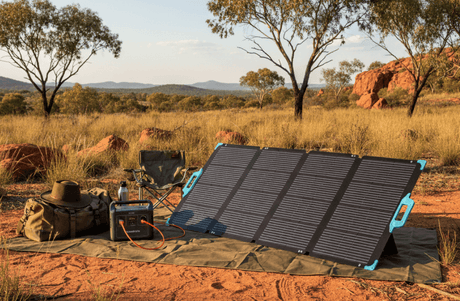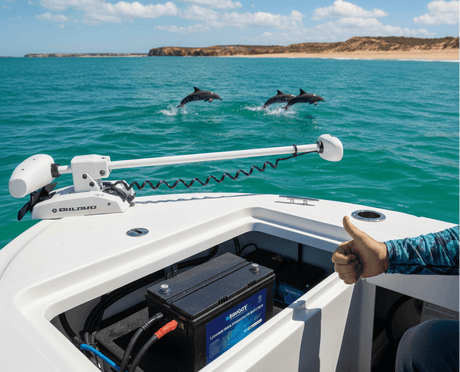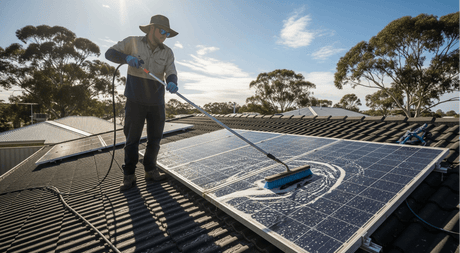If you've ever wondered, "What exactly is a DC-to-DC charger?" you've come to the right place. Think of it as smart power management for your vehicle, a vital device that takes unreliable energy from your alternator and transforms it into a steady stream of power tailored precisely to charge your auxiliary batteries fully and efficiently.
Whether you’re a weekend warrior in a 4x4, a full-time van-lifer, or simply using a lithium battery in your modern truck, a DC to DC charger is the essential upgrade that bridges the gap between your vehicle’s limited alternator and your high-power accessories. Let's dive in and see how this single device solves the most frequent off-grid power issues.
What Is a DC to DC Battery Charger?
Why You Can't Just Connect Batteries Directly
While it may appear straightforward to charge your auxiliary house batteries directly from your vehicle's starter battery, this method has most likely failed. For two main reasons. First, your vehicle's alternator is designed to quickly recharge and maintain a starter battery. It is not built to provide the delicate, multi-stage charging that deep-cycle AGM, Gel, or Lithium batteries require to reach a full, healthy charge.
Second, the long cable from the engine bay to the back of your vehicle causes a large voltage drop. This signifies that your auxiliary battery receives weak and insufficient voltage, leaving it chronically undercharged.
This is exactly why you need a DC-DC battery charger. It cleverly manages the power from your alternator to provide the correct multi-stage charge for your house batteries.
What Is a DC to DC Battery Charger?
A DC to DC battery charger is an intelligent electronic device that acts as a power manager and translator between your alternator and your house batteries. It take the variable, often insufficient voltage from your alternator, and converts it into a stable, precise output. Most importantly, it delivers a multi-stage charging profile (Bulk, Absorption, and Float) suited to your specific battery chemistry. In essence, it ensures that your batteries charge completely and quickly, independent of what your alternator is performing.
Key Benefits of a DC to DC Charger:
- Faster and Full Charges: Achieves a complete 100% charge, which basic isolators cannot.
- Extends Battery Life: Proper multi-stage charging process prevents damaging sulfation in lead-acid batteries, extending their lifespan across all types.
- Compatible with Smart Alternators: Works seamlessly with modern smart alternators, drawing power intelligently without disrupting car electronics.
- Voltage Boost Feature: Ensures consistent charging even from a smart alternator by raising low voltage to desired levels.
- Multi-Battery Compatibility: Features pre-programmed charging profiles optimized for Lithium (LiFePO4), AGM, Gel, and Flooded batteries.
A perfect example of this technology in action is the Renogy DC-DC Charger. Renogy has built a strong reputation for delivering reliable and user-friendly solar and electrical components, and their DC-DC chargers are no exception. They are specifically engineered to provide all the benefits listed above, offering a robust and intelligent solution for anyone looking to upgrade their vehicle's power system.

How Does a DC-to-DC Battery Charger Work?
Think of a DC-to-DC charger as a smart power management solution tailored to your vehicle's electrical system. While an AC to DC charger turns household alternating current into direct current for devices, a DC-to-DC charger takes the existing DC power from your vehicle's electrical system and optimizes it for charging your auxiliary battery. It works in two main ways:
1. Acts as a Smart Converter
The charger takes the variable DC power from your vehicle's alternator and starter battery. It intelligently converts this power into a clean, stable, and higher DC voltage that is perfectly tailored to charge your auxiliary battery. This is crucial for modern vehicles with "smart alternators" that often output lower voltage.
2. Applies Intelligent Multi-Stage Charging
This is the core benefit. An internal computer runs a precise charging program designed to maximize battery health and lifespan. Here's the 3-step process to charge your battery optimally using a DC-DC charger.
- Bulk Stage: Charges at maximum speed to bring the battery up to about 80% capacity.
- Absorption Stage: Safely tops off the final 20% by holding a steady voltage, slowing down to reduce stress.
- Float Stage: Switches to a safe maintenance voltage to keep the battery fully charged without overcharging.
This sophisticated, automated process is what truly separates a DC-to-DC charger from a basic isolator or relay.
Types of DC to DC Battery Chargers
Basic DC-DC Chargers: These units focus solely on converting alternator power. They are a significant improvement over isolators, but lack solar capacity. You would need a separate solar charge controller.
MPPT DC-DC Chargers: These are the most popular and adaptable options for campers and vanlifers. It combines a full DC-DC charger with a MPPT solar charge controller into a single unit. It can automatically combine power from your alternator and solar panels, frequently putting free solar energy first. This is the ideal all-in-one option for a strong electrical system.

Multi-Output DC-DC Chargers: Designed for complex systems, these can charge two different battery types at the same time, using the appropriate profile for each one.
What Size DC to DC Charger Do I Need
The size of DC-DC charger depends on how much extra power your vehicle’s alternator can provide, and how much charge your battery bank can safely accept. A good rule of thumb is to match the charger size to your battery’s capacity. A safe and effective charging rate is usually between 0.2C and 0.3C. Here’s a simple calculation:
For a 100Ah Battery: 100Ah x 0.2 = 20A. A 20A or 30A dc to dc charger would be ideal.
For a 200Ah Battery: 200Ah x 0.2 = 40A. A 40A or 50A charger would be a good fit.
Make sure your vehicle's alternator can handle the additional load without overheating.
How to Connect a DC to DC Charger
|
NOTE
Disconnect the negative terminal of your starter battery before beginning any work. If you are unsure, consult a professional auto electrician. |
Step 1. Install the Charger
Mount your DC-DC charger as close as possible to your auxiliary battery. Make sure the location has good airflow to prevent overheating.
Step 2. Connect to Your Vehicle's Main Battery
Run a set of thick, high-quality wires from your vehicle's starter battery (both positive and negative) to the input side of the DC-DC charger.
⚠️Install a fuse or circuit breaker on the positive cable within 18 inches (about an arm’s length) of the starter battery. This protects against electrical shorts.
Step 3. Wire It Up to Your Auxiliary Battery
Now, run another set of thick cables from the charger’s output terminals over to your auxiliary battery.
Step 4. Connect the Ignition Sense Wire
The small-gauge wire connects to a fuse that is only live when the ignition is on. This tells the charger to only operate when the engine is running.
Step 5. Add Solar
If your DC-DC charger has a built-in solar input, go ahead and connect your solar panels to these special terminals.
Step 6. Turn It On and Set It Up
Finally, configure the charger for your battery type by using dip switches or a Bluetooth. Double-check that every connection is tight and correct, then switch the entire system on. You’re all set.
Final Thoughts
A DC-DC battery charger is the simple solution for dead batteries after hours of driving. It seamlessly converts your vehicle's unpredictable alternator output into the consistent charge your house batteries demand. This is not simply an upgrade. It's your guarantee of power, letting you focus on the adventure ahead without worrying about your fridge shutting down or lights going dim. Stop battling with low-quality batteries and give it a try today!

![What Is a DC to DC Battery Charger [Comprehensive Guide]](http://au.renogy.com/cdn/shop/articles/IMG_3829_bd86de74-31d6-49fd-b9d5-265bb723091d.jpg?v=1757582605&width=1600)





![What Is a DC to DC Battery Charger [Comprehensive Guide]](http://au.renogy.com/cdn/shop/articles/IMG_3829_bd86de74-31d6-49fd-b9d5-265bb723091d.jpg?v=1757582605&width=460)


